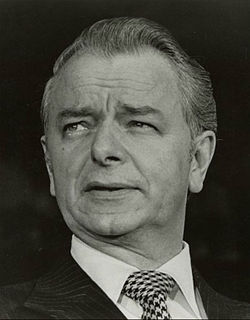
The United States Senate elections, 1978 in the middle of Democratic President Jimmy Carter's term. Thirteen seats changed hands between parties. The Democrats at first lost a net of two seats to the Republicans, and then one more in a special election. Democrats nevertheless retained a 58-41 majority.

The 1964 United States Senate elections coincided with the election of President Lyndon B. Johnson by an overwhelming majority, to a full term. His Democratic Party picked up a net two seats from the Republicans. As of 2019, this is the last time either party has had a two-thirds majority in the Senate, which would have hypothetically allowed the Senate Democrats to override a veto, convict and expel certain officials, or invoke cloture without any votes from Republicans. The Senate election coincided with Democratic gains in the House in the same year.
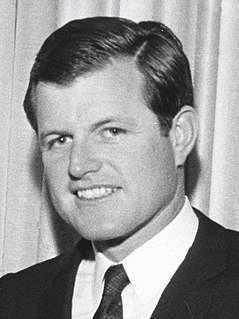
The 1970 United States Senate election in Massachusetts was held on November 3, 1970. The incumbent Democratic Senator Ted Kennedy defeated his challengers. This was Kennedy's first election run since the 1969 Chappaquiddick incident. Kennedy won 62.2% of the electoral votes, down from 74.3% that he won in the previous election in 1964, indicating that Chappaquiddick did affect his election popularity.
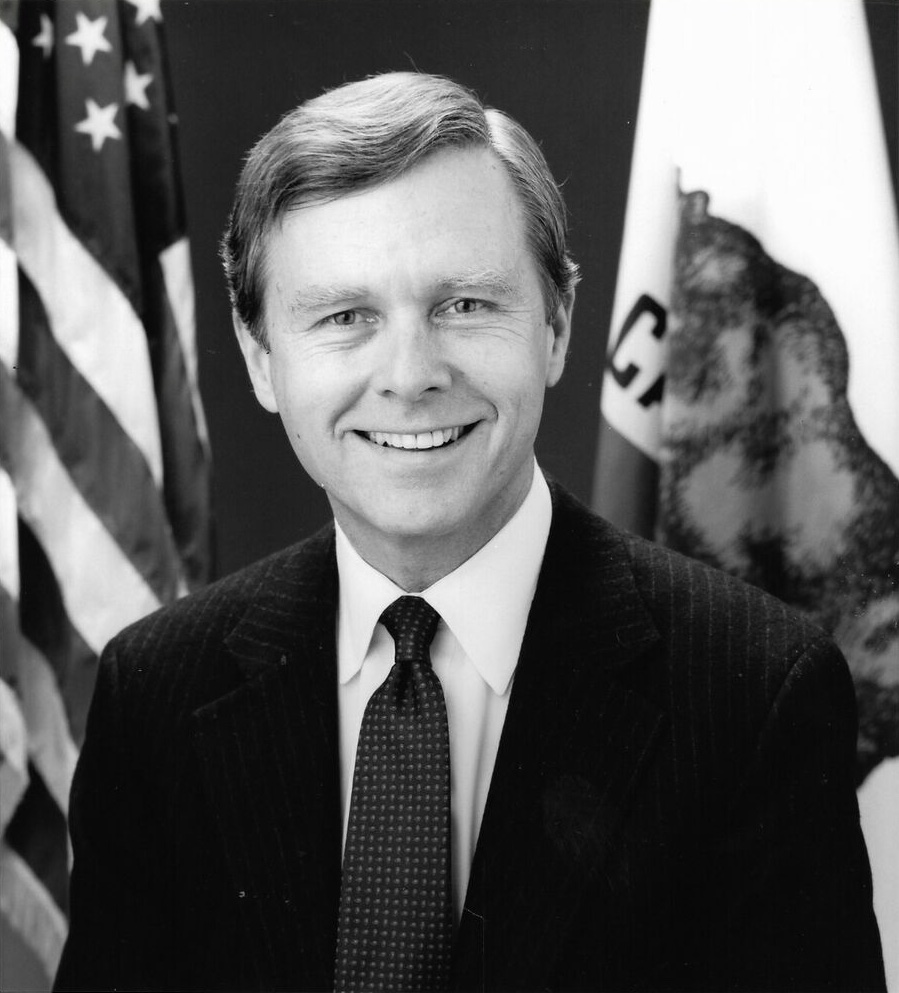
The 1982 United States Senate election in California took place on November 2, 1982. Incumbent Republican U.S. Senator S. I. Hayakawa decided to retire after one term. Republican Pete Wilson won the open seat.

The 1958 United States Senate elections in Arizona took place on November 4, 1958. Incumbent Republican U.S. Senator Barry Goldwater ran for reelection to a second term, and defeated former U.S. Senator, and then-Governor, Ernest McFarland in the general election. The election was a virtual rematch from 1952, where Goldwater defeated McFarland by a narrow margin. Goldwater had attributed the win to the unpopularity of President Harry S. Truman and popular Wisconsin Senator Joseph McCarthy endorsing his campaign.

The 1964 United States Senate election in Arizona took place on November 3, 1964. Incumbent Republican U.S. Senator Barry Goldwater decided not to run for reelection to a third term, instead running for President of the United States as the Republican Party nominee against Lyndon B. Johnson. Governor of Arizona Paul Fannin ran unopposed in the Republican primary, and defeated Democratic nominee Roy Elson, who was a staff member for U.S. Senator Carl Hayden until Hayden's retirement in 1969.

The 1970 United States Senate election in Arizona took place on November 3, 1970. Incumbent Republican U.S. Senator Paul Fannin decided to run for reelection to a second term, running unopposed in the Republican primary. Fannin defeated Democratic nominee Sam Grossman in the general election.
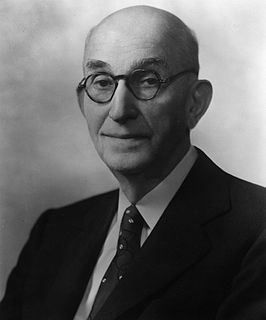
The 1938 United States Senate elections in Arizona took place on November 3, 1938. Incumbent Democratic U.S. Senator Carl Hayden ran for reelection to a third term, defeating Republican nominee Burt H. Clingan in the general election.

The 1956 United States Senate election in Arizona took place on November 6, 1956. Incumbent Democratic U.S. Senator Carl Hayden ran for reelection to a sixth term, defeating Republican nominee Attorney General of Arizona Ross F. Jones in the general election.

The 1950 United States Senate elections in Arizona took place on November 7, 1950. Incumbent Democratic U.S. Senator Carl Hayden ran for reelection to a fifth term, defeating Republican nominee Bruce Brockett in the general election. Brockett was formerly the Republican nominee for governor in both 1946 and 1948.

The 1974 United States Senate election in Arizona took place on November 5, 1974. Incumbent Republican U.S. Senator Barry Goldwater decided to run for reelection to a second consecutive term, after returning to the U.S. Senate in 1968 following his failed Presidential run in 1964 against Lyndon B. Johnson. Goldwater defeated Democratic Party nominee philanthropist Jonathan Marshall in the general election.

The 1968 United States Senate election in Arizona took place on November 5, 1968. Incumbent Democratic U.S. Senator Carl Hayden did not run for reelection to an eighth term, with his longtime staff member Roy Elson running as the Democratic Party nominee to replace him. Elson was defeated by a wide margin, however, by former U.S. Senator and 1964 Republican presidential nominee Barry Goldwater. Prior to Goldwater's election, the seat had been held for decades by the Democratic Party under Carl Hayden, and has thus far remained in Republican Party control since.

The 1962 United States Senate election in Arizona took place on November 6, 1962. Incumbent Democratic U.S. Senator Carl Hayden ran for reelection to a seventh term, defeating Republican nominee State Senator Evan Mecham in the general election. Mecham became Governor of Arizona more than two decades later, and was subsequently impeached from office.

The 1980 United States Senate election in Arizona took place on November 4, 1980. Incumbent Republican Senator Barry Goldwater decided to run for reelection to a third consecutive term, after returning to the Senate in 1968 following his failed presidential run in 1964 against Lyndon B. Johnson. Despite Republican presidential nominee Ronald Reagan's landslide win in Arizona, Goldwater defeated Democratic Party nominee Bill Schulz in the general election by a narrow margin, which later caused Goldwater to decide against running for reelection to a fourth consecutive term. Goldwater won only 3 counties including Maricopa County.
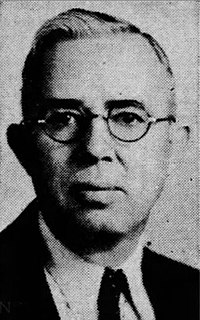
The 1948 Arizona gubernatorial election took place on November 2, 1948. Following the death of Governor Sidney Preston Osborn while in office, Dan Edward Garvey, who was serving as Secretary of State of Arizona was ascended to the position of governor, and thus ran for a full term. Facing a crowded primary field, Garvey emerged successful as the Democratic party's nominee.

The 1954 Arizona gubernatorial election took place on November 2, 1954. Incumbent Governor John Howard Pyle, the first Republican elected to the office in two decades, ran for reelection for a third term.

The 1958 Arizona gubernatorial election took place on November 4, 1958. Incumbent Governor Ernest McFarland decided not to run for reelection and instead unsuccessfully challenged U.S. Senator Barry Goldwater in attempt to return to the United States Senate.

The 1962 Arizona gubernatorial election took place on November 6, 1962. Incumbent Governor Paul Fannin ran for reelection against President of the Western Conference of United Funds Samuel Pearson Goddard in the general election, winning a third consecutive term, a first for a Republican Governor in Arizona. Fannin was sworn into his third term on January 1, 1963.

The 1974 Arizona gubernatorial election took place on November 5, 1974. Incumbent Governor Jack Williams decided not to run for a fourth term as governor. Former United States Ambassador to Bolivia Raúl Héctor Castro, who was the Democratic nominee in 1970, won the Democratic nomination again in 1974, and narrowly won the general election, defeating Republican nominee Russell Williams by 0.85%. Castro was sworn into his first and only term as governor on January 6, 1975.
William R. Schulz is an American politician who was an Independent candidate for Governor of Arizona in the 1986 gubernatorial election, and was the Democratic nominee against Barry Goldwater in the 1980 U.S. Senate election.

















